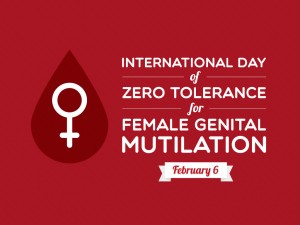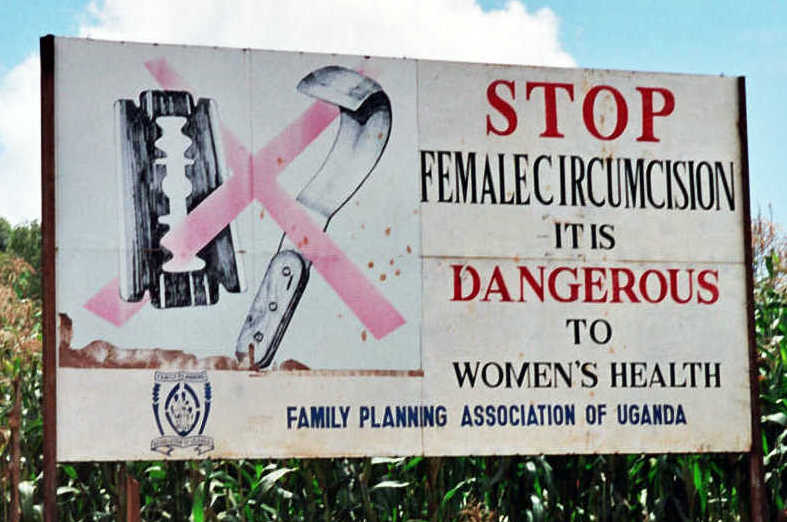What is Female Genital Mutilation ?
Female Genital Mutilation comprises of all procedures involving partial or total removal of the female external genitalia or other injury to the female genital organs for the non-medical reasons as defined by the WHO. It is also called as Female Circumcision. It is traditionally carried out by using a blade, with or without anesthesia.

What are the procedures involved ?
There are four major types of FGM as identified by the WHO. These are
1. Clitoridectomy: Partial or total removal of the clitoris, which is a small sensitive and erectile part of female genitals.
2. Excision: Removing part / all of the clitoris and the inner labia.
3. Infibulation: Narrowing of the vaginal opening through the creation of a covering seal, formed by cutting and re-positioning the labia, through stitching.
4. Other harmful procedures to the female genitalia for non-medical purposes, including pricking,piercing, incising and cauterizing the genital area.
Who carries out the procedure ?
This procedure is usually done in the home or somewhere other than a medical setting. Often it is performed by a family member or by a local circumciser, using knives, blades, sharp hot stones that may not be sterilized before use.

What are the health risks ?
Experience of FGM increases the short and long term health risks to women and girls and it is unacceptable from human rights and health perspective. They are severe pain since the anesthesia is rarely used. Excessive bleeding, shock caused by pain, genital tissue swelling, infections after the use of contaminated instruments, HIV*, Death caused by infection and haemorrhage. Long term risks includes painful urination, Menstrual problems, HIV*, Obstetric complications, Psychological consequences.
HIV* – The direct connection between FGM and HIV remains unconfirmed. But the cutting of genital tissues with the same surgical instruments without sterilization could increase the risk of transmission oh HIV between girls who undergo FGM together.
Why FGM is practiced ?
Different communities and cultures have different reasons for practicing FGM. Social acceptability is the most common reason. Families often feel pressure to have their daughter cut so she is accepted by their community. Also other reasons may include
- to ensure a woman remain a virgin until marriage.
- some believe that the external female genitals are unclean.
- although no religion accepts FGM, some consider it as a religious duty.
Where it is performed ?
FGM is done mostly in parts of northern and central Africa, in the southern sahara and in parts of the middle east and Asia. Worldwide as many as 140 million girls and women alive today have been cut. Three million more girls are thought to be at risk of FGM each year.
What can be done to end FGM ?
- Many programs use respected local women to teach other girls and women in their communities about the harmful effects of FGM.
- Culturally sensitive programs include the use of theater, songs, games to educate families about FGM.
- Passing laws against FGM : It is illegal in most countries around the world including many of the countries in which FGM is regularly practiced.
What can be done to improve the health of girls who have experienced FGM ?
Girls and women who have already experienced FGM, need access to clinically and culturally appropriate care from trained health care providers.
Source: Post content from various URL